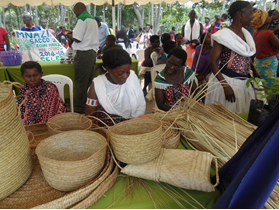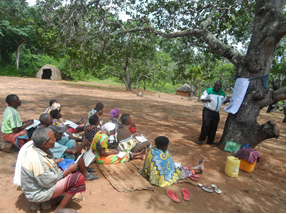SDM Project: Restoration of Sacred Kaya forests in Kenyan Coast for enhanced provision of ecosystem services and products for improved livelihoods
20.11.2018
SUBMITTED ORGANISATION
Kenya Forestry Research Institute, Kenya
PARTNER ORGANISATIONS
1. Bioversity International
2. National Museum of Kenya
3. County Government of Kilifi
4. Rabai Cultural Group
DATE OF SUBMISSION
20/11/2018
REGION
Africa
COUNTRY
Kenya
FOCAL POINT
Chemuku Wekesa, Research Scientist
Abstract
Kaya forests are peculiar multi-functional socio-ecological production landscapes that provide direct and indirect benefits for human wellbeing. These forests are increasingly being degraded due to rapid population growth, overdependence on natural resources by local communities and cultural erosion brought about by modern education and religion. The weak enforcement of laws governing the conservation of these forests coupled with the loss of cultural values that have traditionally been used to conserve the forests presents conservation challenges that require urgent holistic intervention. Therefore, this project was developed to restore degraded sites in 3 Kaya forests (Mudzi Muvya, Fimbo and Bomu) for enhanced biodiversity conservation and improved local livelihoods. Stakeholders’ consultative workshop was held at the start of the project to agree on the implementation plan. The following were the key outputs of the project: enhanced capacity of 500 community members to raise quality tree seedlings, undertake forest rehabilitation/restoration and initiate successful nature based enterprises; established 2 community tree nurseries with capacity to raise 50,000 indigenous tree seedlings annually; expanded pre-existing community seed bank and herbal grove; rehabilitated 5.0 hectares of degraded sites; and developed community-based monitoring tracking tool to track the tree nurseries, tree survival and landscape restoration. The activities of the project have improved the conservation of Kaya forests due to improved skills in tree nursery management and forest landscape restoration and increased participation of local communities in restoration of degraded sites, contributed to enhanced sales of value added nature based products (eco-tourism, basketry, bee-keeping and traditional artifacts), increased household incomes and increased appreciation of traditional knowledge and associated institutions and practises especially among the young generation. The project has enhanced sustainable conservation of biological and cultural diversity, enhanced environmental, and socio-economic benefits from SEPLS, and restored degraded sites hence addressing IPSI strategic objectives 2 and 3; ABTs 7, 14, 15 and 18 and SDGs 6, 13 and 15. Improved capacity of local communities to undertake restoration of degraded sites, and regularly monitor the recovery of replanted sites, operationalization and up-scaling of community seed bank and establishment of tree nurseries to raise quality indigenous tree species seedlings were the main achievements of the project. Community ownership of the project, participatory approach in implementation of activities, partnerships with relevant stakeholders and effective training of community groups are important lessons learnt that could guide future implementation of community/field-based projects for maximum impact.



